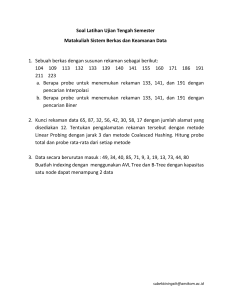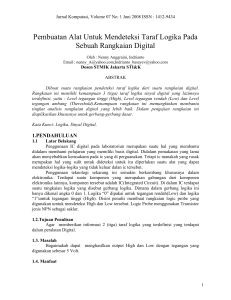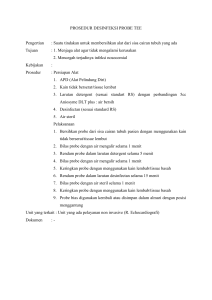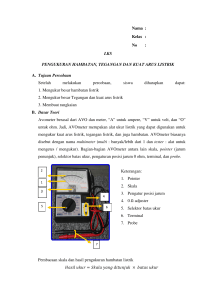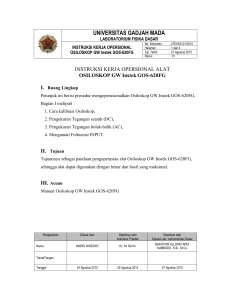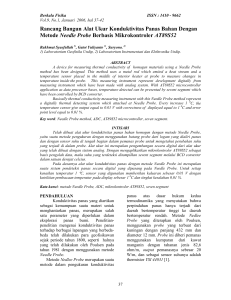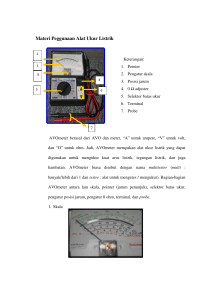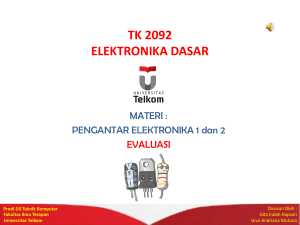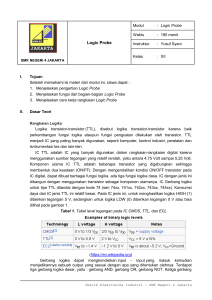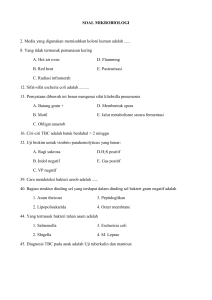Perancangan Probe DNA Biosensor Berbasis
advertisement
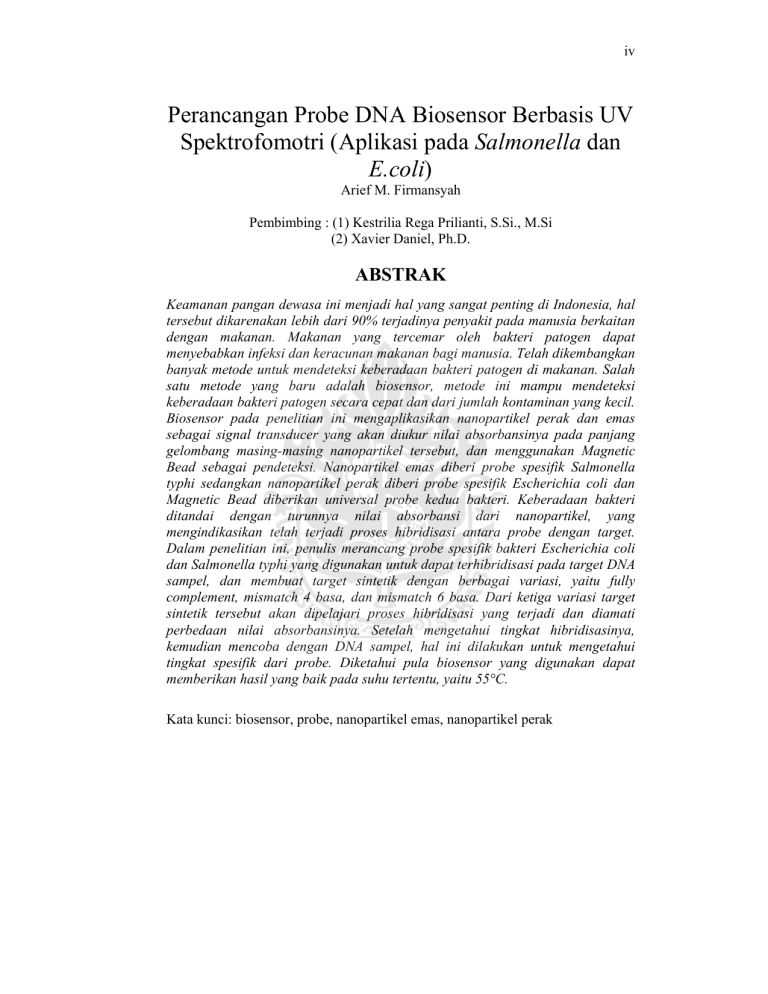
iv Perancangan Probe DNA Biosensor Berbasis UV Spektrofomotri (Aplikasi pada Salmonella dan E.coli) Arief M. Firmansyah Pembimbing : (1) Kestrilia Rega Prilianti, S.Si., M.Si (2) Xavier Daniel, Ph.D. ABSTRAK Keamanan pangan dewasa ini menjadi hal yang sangat penting di Indonesia, hal tersebut dikarenakan lebih dari 90% terjadinya penyakit pada manusia berkaitan dengan makanan. Makanan yang tercemar oleh bakteri patogen dapat menyebabkan infeksi dan keracunan makanan bagi manusia. Telah dikembangkan banyak metode untuk mendeteksi keberadaan bakteri patogen di makanan. Salah satu metode yang baru adalah biosensor, metode ini mampu mendeteksi keberadaan bakteri patogen secara cepat dan dari jumlah kontaminan yang kecil. Biosensor pada penelitian ini mengaplikasikan nanopartikel perak dan emas sebagai signal transducer yang akan diukur nilai absorbansinya pada panjang gelombang masing-masing nanopartikel tersebut, dan menggunakan Magnetic Bead sebagai pendeteksi. Nanopartikel emas diberi probe spesifik Salmonella typhi sedangkan nanopartikel perak diberi probe spesifik Escherichia coli dan Magnetic Bead diberikan universal probe kedua bakteri. Keberadaan bakteri ditandai dengan turunnya nilai absorbansi dari nanopartikel, yang mengindikasikan telah terjadi proses hibridisasi antara probe dengan target. Dalam penelitian ini, penulis merancang probe spesifik bakteri Escherichia coli dan Salmonella typhi yang digunakan untuk dapat terhibridisasi pada target DNA sampel, dan membuat target sintetik dengan berbagai variasi, yaitu fully complement, mismatch 4 basa, dan mismatch 6 basa. Dari ketiga variasi target sintetik tersebut akan dipelajari proses hibridisasi yang terjadi dan diamati perbedaan nilai absorbansinya. Setelah mengetahui tingkat hibridisasinya, kemudian mencoba dengan DNA sampel, hal ini dilakukan untuk mengetahui tingkat spesifik dari probe. Diketahui pula biosensor yang digunakan dapat memberikan hasil yang baik pada suhu tertentu, yaitu 55°C. Kata kunci: biosensor, probe, nanopartikel emas, nanopartikel perak v Design Probe for DNA Biosensor Base on UV Spectrofotometer (Aplication for Salmonella and E.coli) Arief M. Firmansyah Pembimbing : (1) Kestrilia Rega Prilianti, S.Si., M.Si (2) Xavier Daniel, Ph.D. ABSTRACT Nowadays, food security is becoming a very important matter in Indonesia, because over 90% of diseases in humans are related to food poisoning. Food contaminated by pathogenic bacteria can cause infections and foodborne diseases. Many methods have been developed to detect the presence of bacterial pathogens in food. One of the newly developed methods is biosensor. This method can detect the presence of pathogenic bacteria quickly and its sensitivity is very high. Silver and gold nanoparticles are used as signal transducers to detect and quantify the level of absorbance at a specific wavelength for each nanoparticles and magnetic beads used for detection. Salmonella typhi’s spesific probe was conjugated to gold nanoparticles and Escherichia coli’s specific probe was conjugated to silver nanoparticles while universal probe for each bacteria was conjugated to magnetic beads. The presence of these two bacteria was characterized by the decrease in the absorbance of nanoparticles in case of an hybridization between the probes and their targets. In this research, the author designed probe for DNA targets from E.coli and Salmonella thypi. Synthetic targets were also designed so that their level of complementarity with their respective probe was fully complement, or with mismatches of 4 and 6 bases. The three variations of the synthetic targets were studied by hybridization processes and a change in the absorbance was observed. After checking the level of hybridization, DNA samples were used in order to find out the level of specificity of the probes. Based on this research the biosensor that the author used could gave the good result in the temperature of 55°C. Key Word: biosensor, probe, gold nanoparticles, silver nanoparticles
